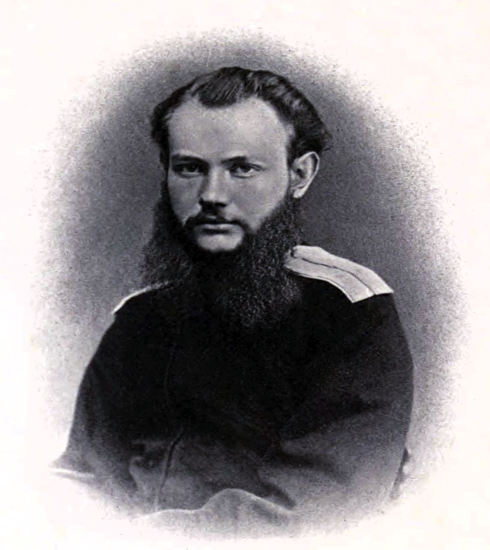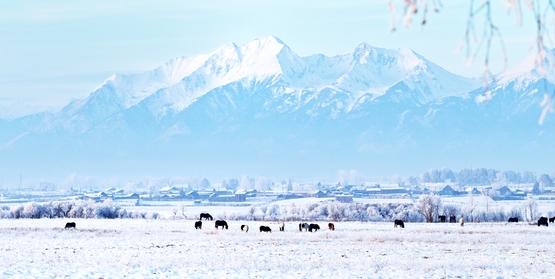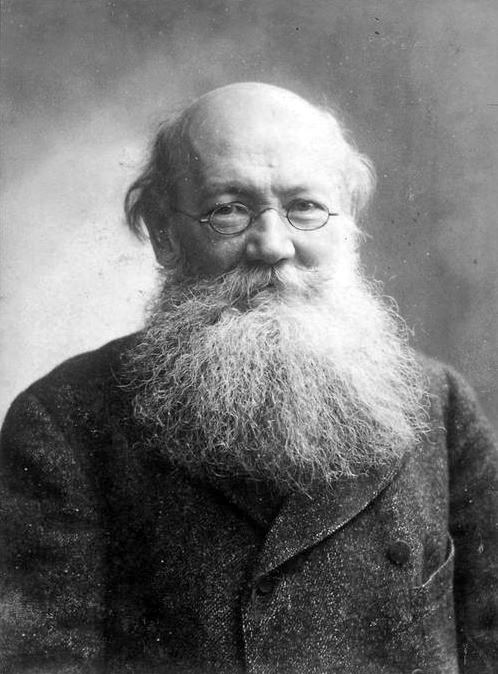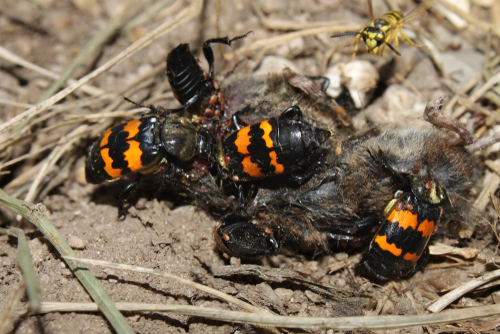
The Russian nobleman-turned-anarchist was also a biologist whose research in Siberia laid the groundwork for modern biological studies of co-operation, writes Tom Ireland
The Biologist 66(3) p26-31
Kropotkin was away for five years and travelled 50,000 miles, mostly on horseback and with few possessions
Kropotkin initially wondered if nature in Siberia was just different to that in the rest of the world
Although he believed intelligence was one of the great advantages that higher animals had in terms of their ability to co-operate, Kropotkin recognised that co-operation occurred “even amidst the lowest animals”
Nowadays, co-operation is recognised as fundamental in order for evolution to construct new levels of organisation
Peter Alexeyevich Kropotkin was born in Moscow in 1842 to a family of Russian aristocrats. At a time when Russia’s archaic feudal system was creaking under pressure to reform, the Kropotkin family ‘owned’ nearly 1,200 peasant labourers, or serfs. According to his memoirs, the young Kropotkin’s life was one of lavish feasts, country retreats, horse-drawn sledges, and parlour games in ‘jewel-covered costumes'.
Half a century later Kropotkin would be a celebrated anarchist philosopher who had spent many years in exile in remote communes or disguised as a peasant.
However, he was also a naturalist and biologist who made an important contribution to the controversial theory that society was still trying to understand and interpret – evolution by natural selection.
As a young man Kropotkin excelled in exactly the sort of career path expected of him, attending an elite military academy in St Petersburg and rising to various senior positions in the army of the Russian emperor, Alexander II. However, Kropotkin, like many of his generation, was becoming disillusioned by the cruelty of serfdom and imperial rule in Russia. He secretly began reading and writing for revolutionary journals and newspapers.

Kropotkin in 1864. He served in various senior military and state positions during the reign of Alexander II, before moving into a role that allowed him to join geographical expeditions to Siberia.
An opportunity arose for him to take a government role that would require him to travel to a recently annexed corner of eastern Siberia, one of the most inhospitable and far-flung regions of the Russian empire. According to Kropotkin biographer Oren Harman, it would become his polar version of Darwin’s voyage aboard the Beagle [2].
Kropotkin was away for five years and travelled 50,000 miles, mostly on horseback and with few possessions.
He at first intended to work on a geological theory of mountain chains and high plateaus but was also keen to find evidence of Darwin’s theory of evolution, published in 1859. As well as being fascinated by the theory, he was aghast that philosophers and politicians were increasingly misusing Wallace and Darwin’s concept of ‘survival of the fittest’ to justify the horrors of slavery, poverty and war in their own countries.
Such ideologies exaggerated the degree to which evolution was driven by conflict between members of the same species, Kropotkin believed. It “raised the pitiless struggle for personal advantage to the height of a biological principle,” he wrote.
In his travels through the Siberian wilderness Kropotkin saw little to no conflict between animals of the same species. What he did see, everywhere, was collaboration: wolves hunting in packs, birds helping one another feed or stay warm, deer finding new pastures in unison, horses forming defensive formations against predators. “Wherever I saw animal life in abundance, I saw mutual aid and mutual support ”, [3] he wrote.

An opportunity arose for him to take a government role that would require him to travel to a recently annexed corner of eastern Siberia, one of the most inhospitable and far-flung regions of the Russian empire. According to Kropotkin biographer Oren Harman, it would become his polar version of Darwin’s voyage aboard the Beagle [2].
Kropotkin was away for five years and travelled 50,000 miles, mostly on horseback and with few possessions.
He at first intended to work on a geological theory of mountain chains and high plateaus but was also keen to find evidence of Darwin’s theory of evolution, published in 1859. As well as being fascinated by the theory, he was aghast that philosophers and politicians were increasingly misusing Wallace and Darwin’s concept of ‘survival of the fittest’ to justify the horrors of slavery, poverty and war in their own countries.
Such ideologies exaggerated the degree to which evolution was driven by conflict between members of the same species, Kropotkin believed. It “raised the pitiless struggle for personal advantage to the height of a biological principle,” he wrote.
In his travels through the Siberian wilderness Kropotkin saw little to no conflict between animals of the same species. What he did see, everywhere, was collaboration: wolves hunting in packs, birds helping one another feed or stay warm, deer finding new pastures in unison, horses forming defensive formations against predators. “Wherever I saw animal life in abundance, I saw mutual aid and mutual support ”, [3] he wrote.

Kropotkin embarked on epic surveys of eastern Russia and Siberia. Although he was expected to help enact administrative reforms in the far-flung region, he soon began to focus on his scientific studies.
Kropotkin initially wondered if nature in Siberia was just different to that in the rest of the world.
Darwin and Wallace had formed their theory through studying nature in the “shrieking hullabaloo of the tropics” [2], and in this land of brutal winters, where snow storms would glaze the vast, featureless tundra in miles of ice, collaboration rather than conflict seemed to be the best strategy for survival.
In On the Origin of Species, Darwin had recognised that “the struggle for life” could be a battle against any number of things, from competition with members of one’s own species or attacks from predators to a lack of nutrients or damage from the elements. Naturalists before Kropotkin had also noted many instances of animals co-operating, from social insects to packs of dogs. Darwin’s grandfather, Erasmus, had written in the previous century about how the common crab stations ‘sentinels’ to guard fellow crabs that are moulting and therefore vulnerable.
However, Kropotkin wanted to ensure the significance of co-operation in “the struggle for existence” was recognised. He theorised that if the environment in which animals lived was harsh enough to be the main enemy, animals might seek ways other than conflict to manage such struggle.
In Russia particularly, perhaps the fight against the elements was so great it had led to co-operation and collaboration, rather than the bloody squabbles that ensued where heat, light, water and food were bountiful.
Like Darwin, Kropotkin returned from his long adventure with his overarching theory not yet fully coalesced. His observations of nature had also unquestionably become entangled with his political views, with each seemingly driving the other.
When the death of his father allowed him to abandon any pretence that he was still in a government role, Kropotkin became a full-on revolutionary, declaring himself an anarchist. He believed that people should live in small, self-organised communities with no central rule, and preached co-operation instead of conflict. He began attending meetings in disguise and continued his writing in exile from within various communes in Europe.

Kropotkin initially wondered if nature in Siberia was just different to that in the rest of the world.
Darwin and Wallace had formed their theory through studying nature in the “shrieking hullabaloo of the tropics” [2], and in this land of brutal winters, where snow storms would glaze the vast, featureless tundra in miles of ice, collaboration rather than conflict seemed to be the best strategy for survival.
In On the Origin of Species, Darwin had recognised that “the struggle for life” could be a battle against any number of things, from competition with members of one’s own species or attacks from predators to a lack of nutrients or damage from the elements. Naturalists before Kropotkin had also noted many instances of animals co-operating, from social insects to packs of dogs. Darwin’s grandfather, Erasmus, had written in the previous century about how the common crab stations ‘sentinels’ to guard fellow crabs that are moulting and therefore vulnerable.
However, Kropotkin wanted to ensure the significance of co-operation in “the struggle for existence” was recognised. He theorised that if the environment in which animals lived was harsh enough to be the main enemy, animals might seek ways other than conflict to manage such struggle.
In Russia particularly, perhaps the fight against the elements was so great it had led to co-operation and collaboration, rather than the bloody squabbles that ensued where heat, light, water and food were bountiful.
Like Darwin, Kropotkin returned from his long adventure with his overarching theory not yet fully coalesced. His observations of nature had also unquestionably become entangled with his political views, with each seemingly driving the other.
When the death of his father allowed him to abandon any pretence that he was still in a government role, Kropotkin became a full-on revolutionary, declaring himself an anarchist. He believed that people should live in small, self-organised communities with no central rule, and preached co-operation instead of conflict. He began attending meetings in disguise and continued his writing in exile from within various communes in Europe.

Kropotkin, pictured in 1900, aged 57.
When Darwin died in 1882, Kropotkin wrote an obituary for his own revolutionary paper Le Révolté, writing that Darwin’s work surely proved that “animal societies are best organised in the community-anarchist manner”.
Kropotkin went on to write five essays between 1890 and 1896 that would be published as the book Mutual Aid: A Factor of Evolution in 1902. His research had expanded from the Siberian steppes to consider eusocial insects such as bees and ants, co-operating lizards, hierarchies of hyenas and shoaling fish. “I saw mutual aid and mutual support carried on to an extent which made me suspect in it a feature of the greatest importance for the maintenance of life, the preservation of each species, and evolution,” he wrote.
There were endless tales from around the globe to support his theory – of top predators such as white-tailed eagles crying out to others when a meal was spotted; pelicans hunting together; penguins huddling en masse; and, of course, the great hordes of mammals and birds gathering in indescribable numbers across the Americas – “for all of whom, mutual aid is the rule” [3].
Although he believed intelligence was one of the great advantages that higher animals had in terms of their ability to co-operate, Kropotkin recognised that co-operation occurred “even amidst the lowest animals”.

When Darwin died in 1882, Kropotkin wrote an obituary for his own revolutionary paper Le Révolté, writing that Darwin’s work surely proved that “animal societies are best organised in the community-anarchist manner”.
Kropotkin went on to write five essays between 1890 and 1896 that would be published as the book Mutual Aid: A Factor of Evolution in 1902. His research had expanded from the Siberian steppes to consider eusocial insects such as bees and ants, co-operating lizards, hierarchies of hyenas and shoaling fish. “I saw mutual aid and mutual support carried on to an extent which made me suspect in it a feature of the greatest importance for the maintenance of life, the preservation of each species, and evolution,” he wrote.
There were endless tales from around the globe to support his theory – of top predators such as white-tailed eagles crying out to others when a meal was spotted; pelicans hunting together; penguins huddling en masse; and, of course, the great hordes of mammals and birds gathering in indescribable numbers across the Americas – “for all of whom, mutual aid is the rule” [3].
Although he believed intelligence was one of the great advantages that higher animals had in terms of their ability to co-operate, Kropotkin recognised that co-operation occurred “even amidst the lowest animals”.

Burying beetles (Nicrophorus) are mainly solitary but work
together with other individuals when burying large decaying
animals for their young to feed on.
He was particularly interested in burying beetles (Nicrophorus), a genus of Coleoptera that bury decaying flesh in the ground for their larvae to feed on. They are mostly solitary insects, but occasionally acquire assistance from other beetles in order to bury lumps of flesh that are too big for them to deal with single-handedly. “As a rule, they live an isolated life,” wrote Kropotkin, “but when one of them has discovered a corpse of a mouse or bird, which it can hardly manage to bury itself, it calls four, six, or 10 other beetles to perform the operation with united efforts.”
Many decades before the complexity of microbial communities was understood, Kropotkin’s speculations about organisms he could not see were also prescient. “We must be prepared to learn, some day, from the students of microscopic pond-life, factors of unconscious mutual support, even in the life of microorganisms.” Microbiologists have since found fascinating examples of co-operation within microbial communities, including mutualism, symbiosis, altruism, and dynamic shifts between selfish and selfless strategies.
The opening chapters of Mutual Aid compile evidence of co-operation in the animal world, but later chapters look at mutual aid among what Kropotkin calls “savages” and “barbarians” and in medieval cities, and how the concept of mutual aid could be applied in Russia and the rest of the world. As such, the book became a fundamental text in anarchist communities, but was also read with cautious interest by many natural scientists. In the second edition of his book Kropotkin writes that “12 years have passed since the first edition and it can be said that its fundamental idea – the idea that mutual aid represents in evolution an important progressive element – begins to be recognised by biologists”.
However, a simplistic view of evolution as ‘survival of the fittest’ in a ruthless, individualistic sense persisted – and to some extent persists to this day in the parlance and understanding of evolution. It would take many decades for co-operation to be fully accounted for in evolutionary theory.
In the 1930s and 1940s ecologists began to study co-operation more methodically, with entomologists such as William Morton Wheeler considering how ants seemed to act together as a ‘superorganism’. During the Cold War game theorists studied the logic behind co-operation and altruism in terms of optimal decision making and behaviour.
It was not until the 1960s and 1970s, when evolutionary biologist William Hamilton explored the genetics of co-operative and altruistic behaviours, that mechanisms were deduced to explain how such behaviour could evolve in families even when it lessens the reproductive fitness of the actor doing it (for example, a squirrel sounding an alarm call that draws attention to itself). Sociobiologist Robert Trivers expanded on this to help explain how co-operation between unrelated individuals could evolve.
Nowadays, co-operation is recognised as fundamental in order for evolution to construct new levels of organisation.
The emergence of genomes, cells, multicellular organisms, social insects, complex ecosystems and, indeed, human society are all based on co-operation. The idea of biological systems working in alignment with others is such a basic aspect of ecology and evolution that it is remarkable to think its importance might have been overlooked for even longer were it not for a nobleman-turned-anarchist wandering the snowy steppes of Siberia.
Kropotkin’s contribution was important, although the interconnectedness of his evidence gathering with his political views would be frowned upon in today’s world; he went looking for something to prove that life was more than “a war of each against all” [3]. Yet the evidence he compiled was undeniably clear, and helped recalibrate Darwin’s great theory when it was on the verge of being irredeemably distorted by politics.
His observations of nature, in turn, only strengthened his radical political views, which determined how he lived the rest of his life. As well as being an interesting case of ‘riches to rags’, there can be few biologists in the history of science who have sought to emulate, so literally, the natural processes they studied.
He was particularly interested in burying beetles (Nicrophorus), a genus of Coleoptera that bury decaying flesh in the ground for their larvae to feed on. They are mostly solitary insects, but occasionally acquire assistance from other beetles in order to bury lumps of flesh that are too big for them to deal with single-handedly. “As a rule, they live an isolated life,” wrote Kropotkin, “but when one of them has discovered a corpse of a mouse or bird, which it can hardly manage to bury itself, it calls four, six, or 10 other beetles to perform the operation with united efforts.”
Many decades before the complexity of microbial communities was understood, Kropotkin’s speculations about organisms he could not see were also prescient. “We must be prepared to learn, some day, from the students of microscopic pond-life, factors of unconscious mutual support, even in the life of microorganisms.” Microbiologists have since found fascinating examples of co-operation within microbial communities, including mutualism, symbiosis, altruism, and dynamic shifts between selfish and selfless strategies.
The opening chapters of Mutual Aid compile evidence of co-operation in the animal world, but later chapters look at mutual aid among what Kropotkin calls “savages” and “barbarians” and in medieval cities, and how the concept of mutual aid could be applied in Russia and the rest of the world. As such, the book became a fundamental text in anarchist communities, but was also read with cautious interest by many natural scientists. In the second edition of his book Kropotkin writes that “12 years have passed since the first edition and it can be said that its fundamental idea – the idea that mutual aid represents in evolution an important progressive element – begins to be recognised by biologists”.
However, a simplistic view of evolution as ‘survival of the fittest’ in a ruthless, individualistic sense persisted – and to some extent persists to this day in the parlance and understanding of evolution. It would take many decades for co-operation to be fully accounted for in evolutionary theory.
In the 1930s and 1940s ecologists began to study co-operation more methodically, with entomologists such as William Morton Wheeler considering how ants seemed to act together as a ‘superorganism’. During the Cold War game theorists studied the logic behind co-operation and altruism in terms of optimal decision making and behaviour.
It was not until the 1960s and 1970s, when evolutionary biologist William Hamilton explored the genetics of co-operative and altruistic behaviours, that mechanisms were deduced to explain how such behaviour could evolve in families even when it lessens the reproductive fitness of the actor doing it (for example, a squirrel sounding an alarm call that draws attention to itself). Sociobiologist Robert Trivers expanded on this to help explain how co-operation between unrelated individuals could evolve.
Nowadays, co-operation is recognised as fundamental in order for evolution to construct new levels of organisation.
The emergence of genomes, cells, multicellular organisms, social insects, complex ecosystems and, indeed, human society are all based on co-operation. The idea of biological systems working in alignment with others is such a basic aspect of ecology and evolution that it is remarkable to think its importance might have been overlooked for even longer were it not for a nobleman-turned-anarchist wandering the snowy steppes of Siberia.
Kropotkin’s contribution was important, although the interconnectedness of his evidence gathering with his political views would be frowned upon in today’s world; he went looking for something to prove that life was more than “a war of each against all” [3]. Yet the evidence he compiled was undeniably clear, and helped recalibrate Darwin’s great theory when it was on the verge of being irredeemably distorted by politics.
His observations of nature, in turn, only strengthened his radical political views, which determined how he lived the rest of his life. As well as being an interesting case of ‘riches to rags’, there can be few biologists in the history of science who have sought to emulate, so literally, the natural processes they studied.
References
1) Kropotkin, P. Memoirs of a Revolutionist (Houghton Mifflin, 1899).
2) Harman, O. & Dietrich, M. R. (eds). Dreamers, Visionaries, and Revolutionaries in the Life Sciences (University of Chicago Press, 2018).
3) Kropotkin, P. Mutual Aid: A Factor of Evolution (1902).
Royal Society of Biology, 1 Naoroji Street, London WC1X 0GB
Registered Charity No. 277981, Incorporated by Royal Charter
No comments:
Post a Comment